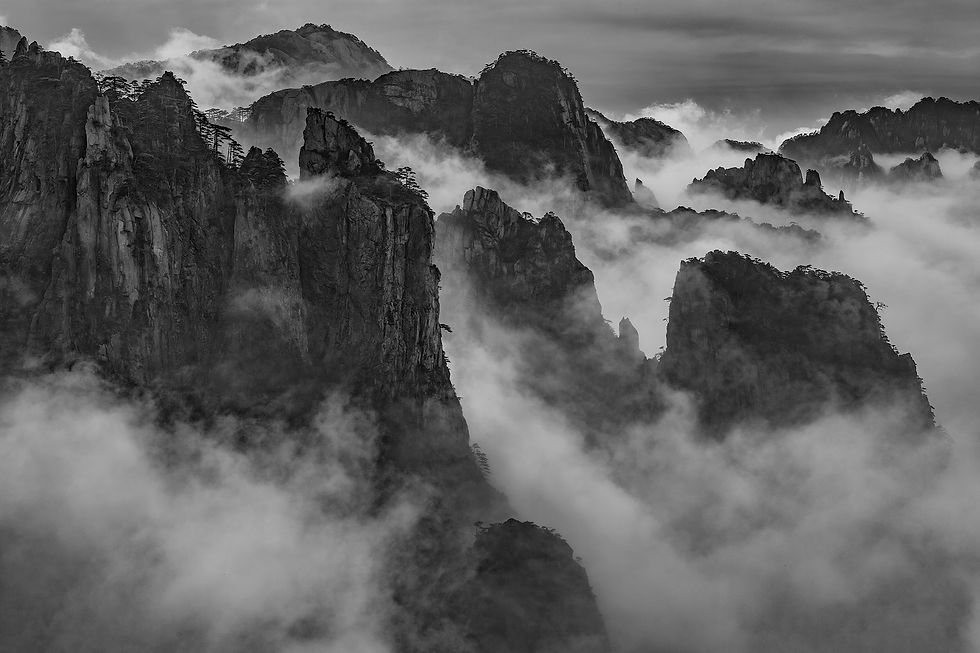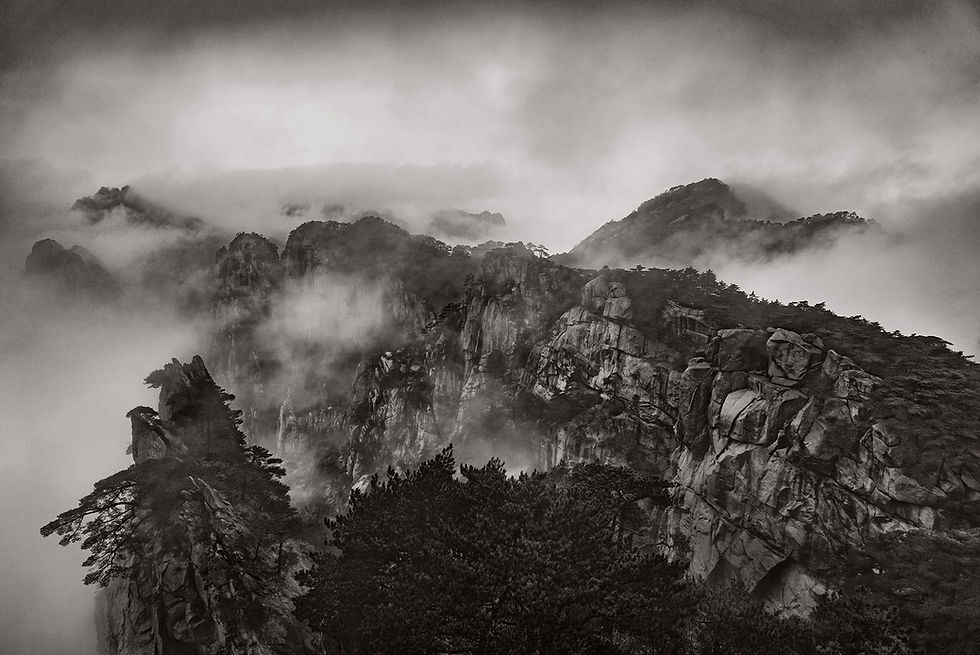Ink China
- Kaisern Chen

- Jan 1, 2019
- 3 min read
Updated: Aug 17, 2023
The original ink painting, or sometimes referred to as ink wash painting, presented in the "Shan Shui" style existed in China since the early 5th century (Liu Song Dynasty) and developed further during Great Tang Dynasty (618-907) following the original Chinese calligraphy using ink dated over two millennia ago.
It is an extraordinary development of art using various concentrations of ink and not until the 8th century that Poet Wang Wei started to apply color to ink painting which is different from most Western paintings begun in colors.
The original "Shan Shui" ink painting developed from the fundamental belief in the Chinese philosophy of Heaven-Earth-Man ("Shan-Shui" literally "mountains-rivers" referring to "nature") and the painting has been focused on the temperament than simply reproduction, so I always thought the "Shan Shui" ink painting is more imaginary than actual views - until I visit Huangshan, Anhui, China.
My series of images titled "Ink China" is inspired by the original Chinese ink painting which once I thought to be works of mostly imagination while it is what Huanshan presented to me, so mythical and so real.

Traditional literati painting is more about expressions than reality, it is more of an idealized than the likeness of nature and the painter has often detached himself from reality so his point of perspective can be in mid-air, perhaps derived from the belief of Taoist as "Tao" (the Way) is everywhere in the universe. Huangshan fits perfectly to the literati idealism.

Mountains are the "heart" of a Chinese landscape painting. They are the center point of a vast landscape, usually jutting upward toward Heaven. Alternatively, they are a steep green monolith covered with craggy rocks and ridges. Behind these surreal landscapes is a profound, philosophical meaning. Furthermore, they are a product of the artist's imagination. The landscape surrounding the mountain entices the viewer to partake in its beauty and contemplate the meaning of the mountain - or sometimes, the vast emptiness surrounding it. The fog surrounding the mountains is the "spiritual void" we must fill by contemplating the painting.

The Ink Painting developed into art as a result of Chinese's believe of the universe - Ying and Yang. Chinese Ink Painting developed as an extension of calligraphy both using the same tool and media.
The tip of the brush is soft; therefore, it cannot be forced to do anything but to be guided by the artist, through the mind. The artist uses the degree of pressure, amount of the ink remained on the brush, to crease lines that look continuous while often appeared somewhat broken, so the textures outline the formation of objects on the painting that is a resembles of the concept - Ying and Yang - which explains everything in nature.
The expression of brush strokes also made to keep the brush tip hidden, and as calligraphy, the brush stops with a backward turn, as a way to hold and store energy. Chinese society prefers people to be modest and reserved, as the brush strokes, to hold and control one's internal energy. Internal energy is the breath of life, so when the artist hides the brush tip, the artwork looks more powerful, yet peaceful.





The original Chinese art of ink wash painting is not born out of pure imagination; it is the landscape and scenery such as in Huangshan experienced by the artists that inspired them, generation after generation. Huangshan has formed approximately 100 million years ago and gained the unique rock formations in the Quaternary Glaciation. It was formerly known as Yishan since Qin Dynasty and renamed to Huangshan (Mount Hunag" by imperial decree in 747 AD by Emperor Xuanzong of the Tang Dynasty. The name is commonly thought to have been coined in honor of the Yellow Emperor, a legendary Chinese emperor, and the mythological ancestor of the Han Chinese; as legend states that Huangshan was the location from which the Yellow Emperor ascended to Heaven.
Huangshan stands in time, through changes of dynasties, derives from its significance in Chinese history as being the frequent subject of poetry and artwork, especially Chinese ink painting and, more recently, photography and motion pictures.











Comments